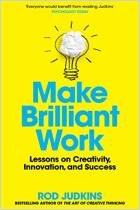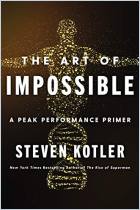
Book
The Net and the Butterfly
The Art and Practice of Breakthrough Thinking
Recommendation
New understanding of how the brain works can help you achieve innovative thinking. Learn to switch between your task-oriented “executive network” and your intuitive, associative “default network” to generate unexpected connections. Recommending mindfulness and self-compassion, academicians Olivia Fox Cabane and Judah Pollack provide practical methods you can use to defeat self-criticism and fear of failure so that you can solve problems and ignite your creativity.
Summary
About the Authors
Olivia Fox Cabane, the best-selling author of The Charisma Myth, was director of innovative leadership at Stanford’s StartX, where Judah Pollack was also a faculty member. He lectures at UC Berkeley’s Haas School of Business.
Learners who read this summary also read
Book
Book
Book
Book

















Comment on this summary or Start Discussion